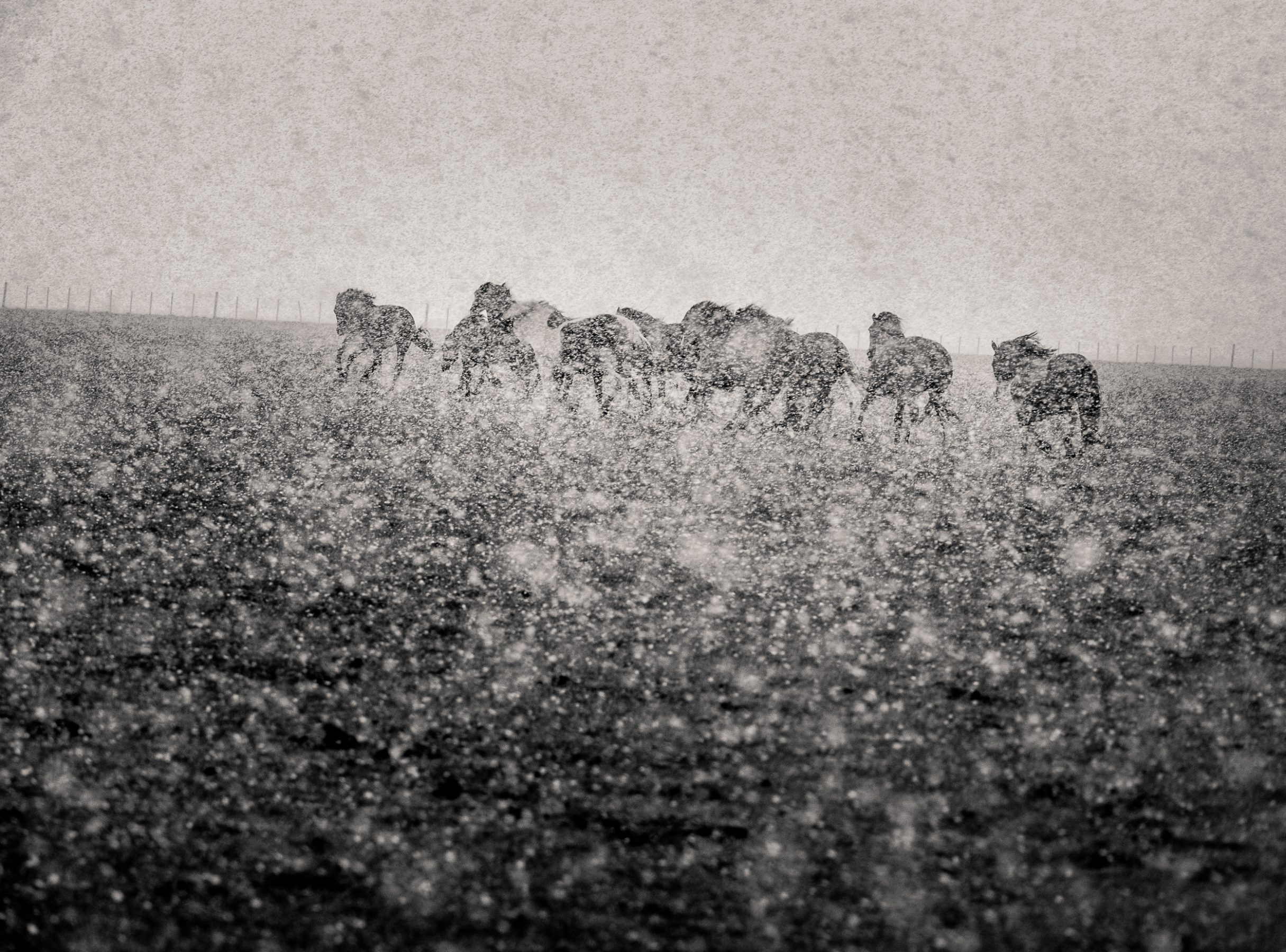
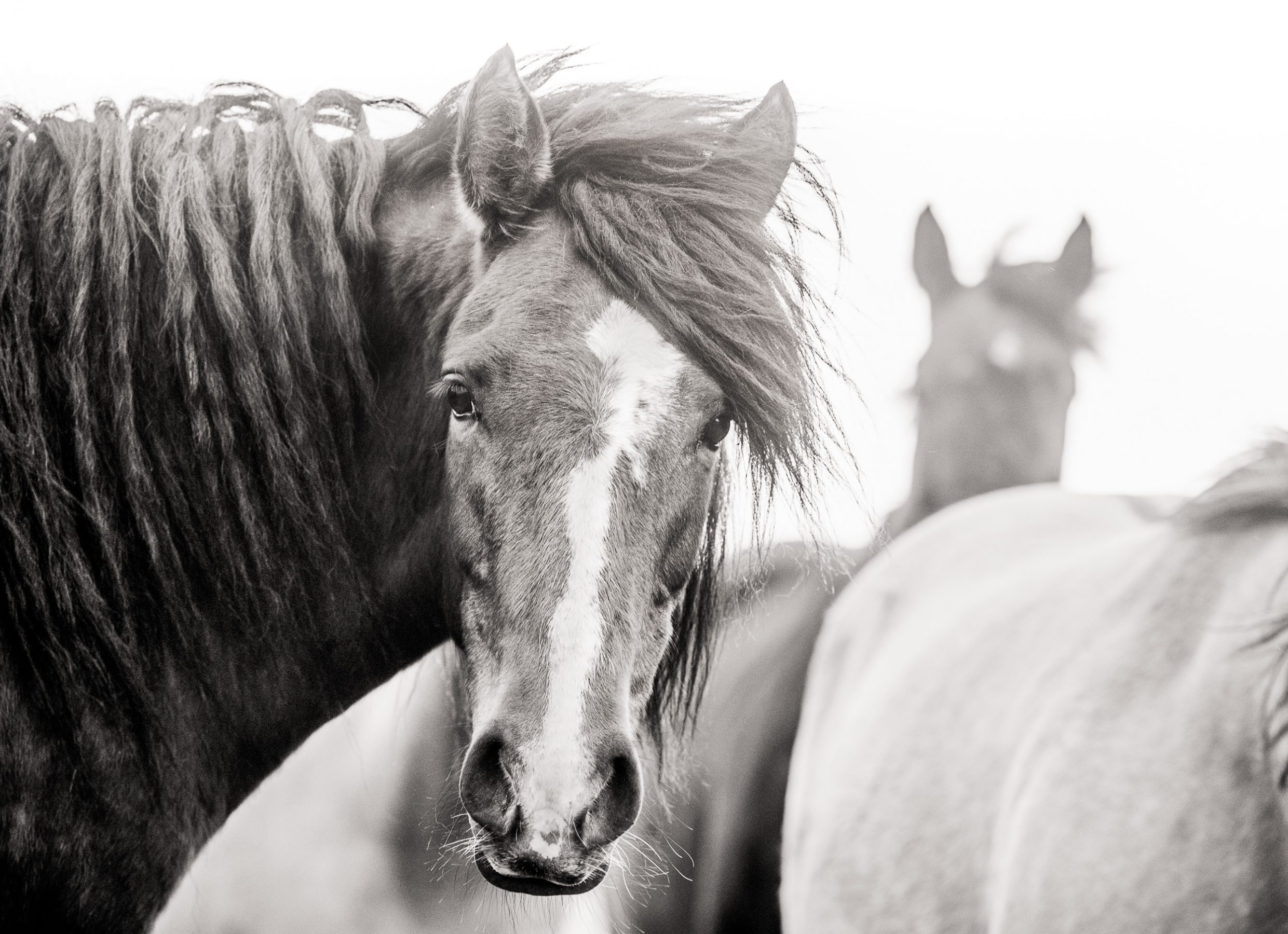
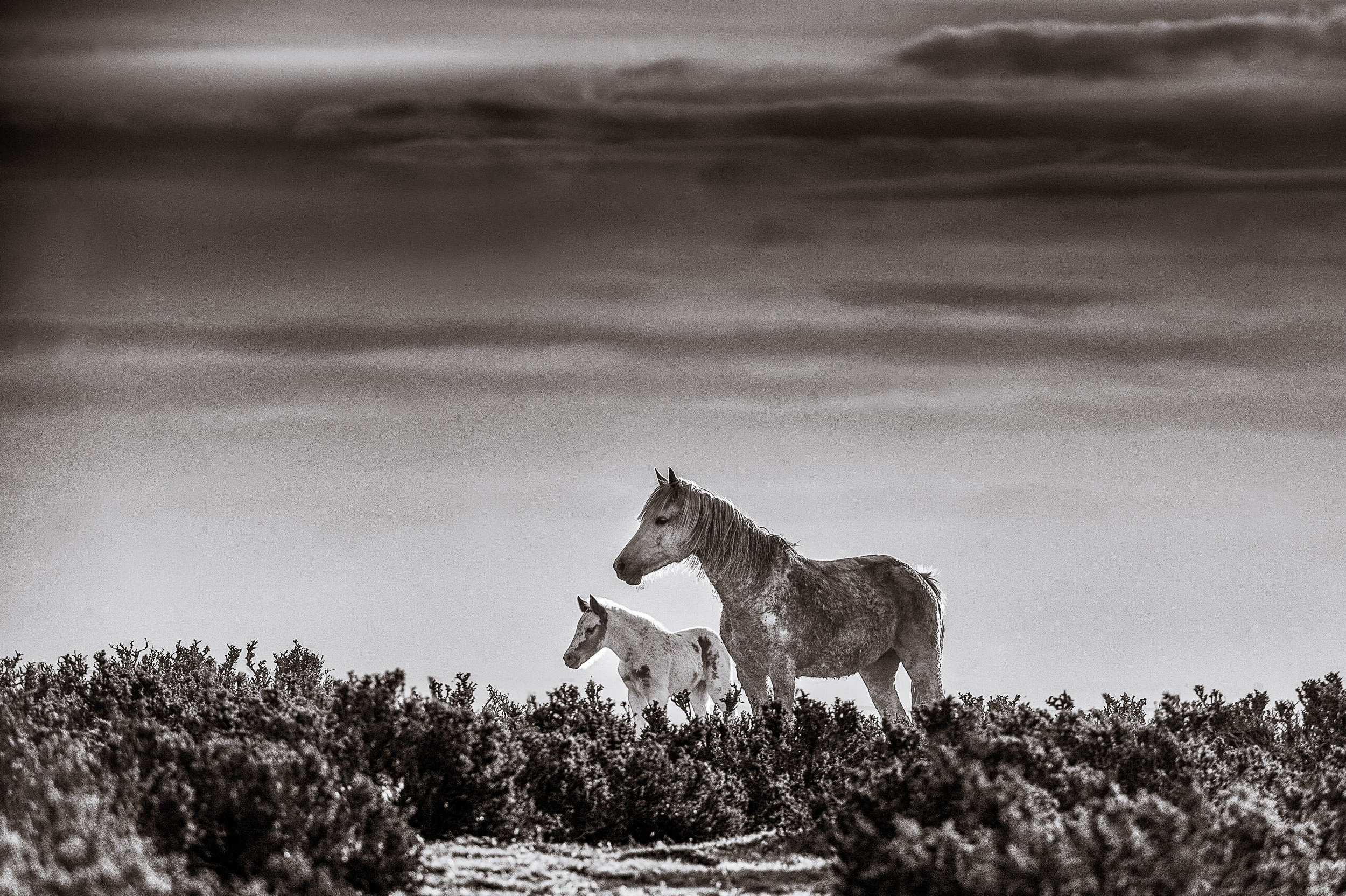
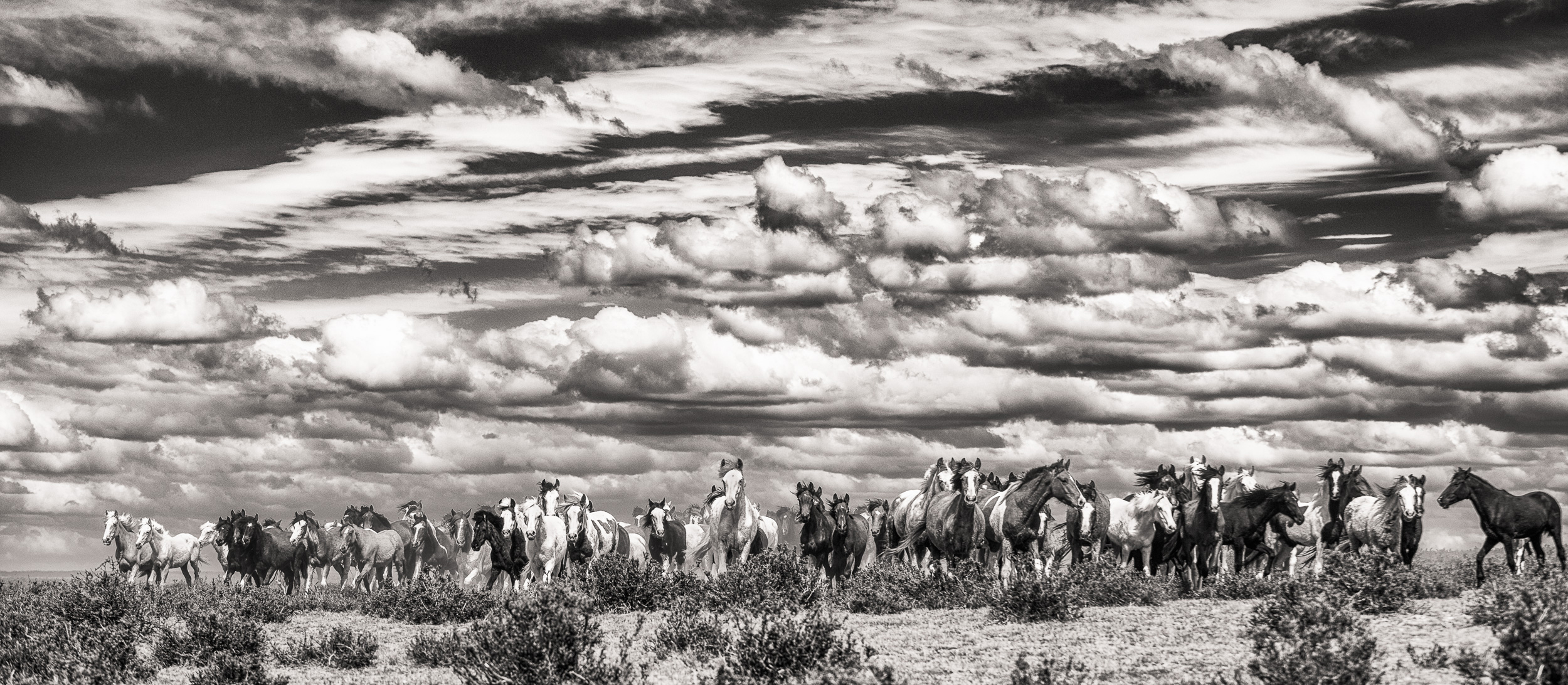
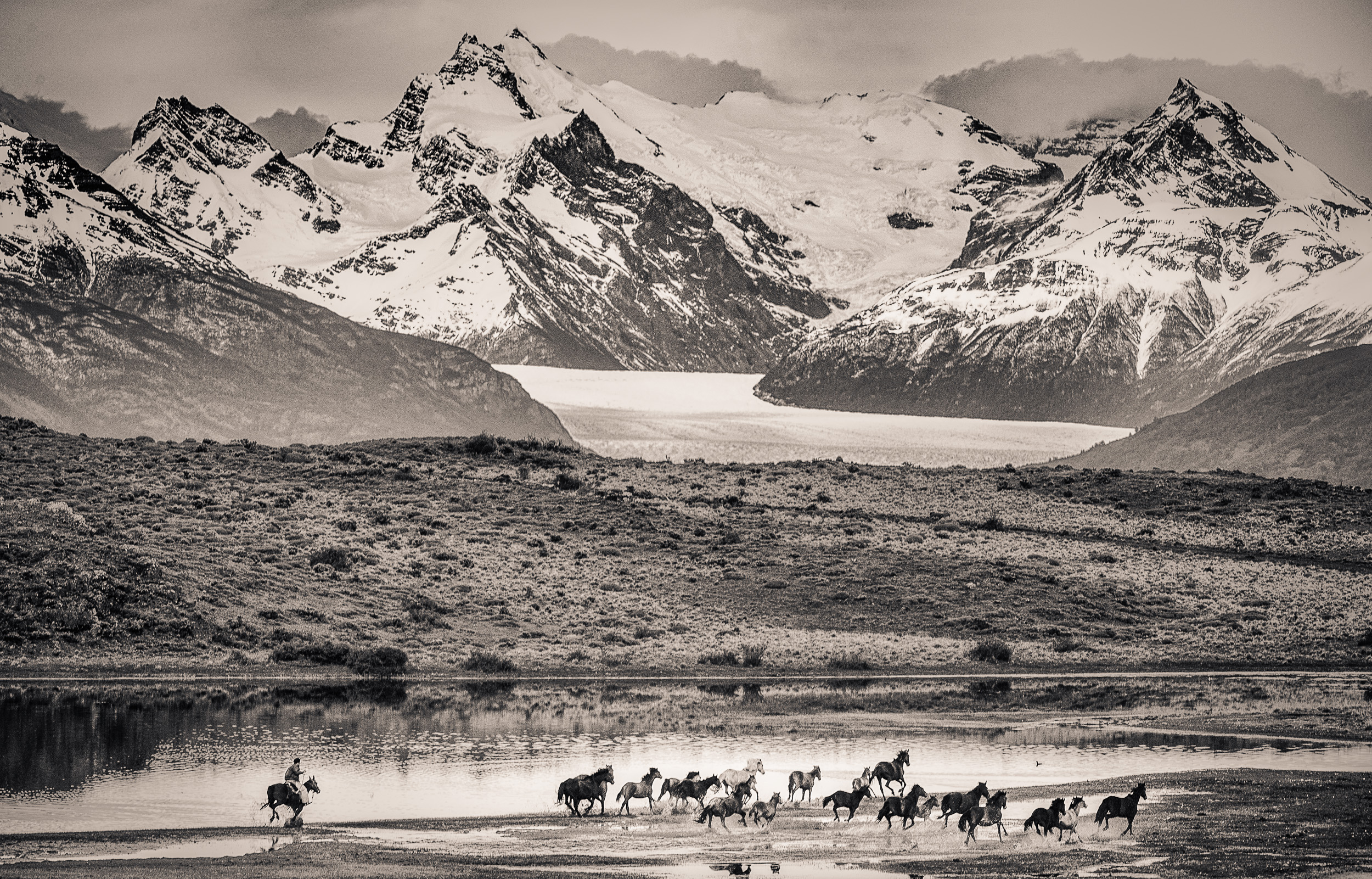
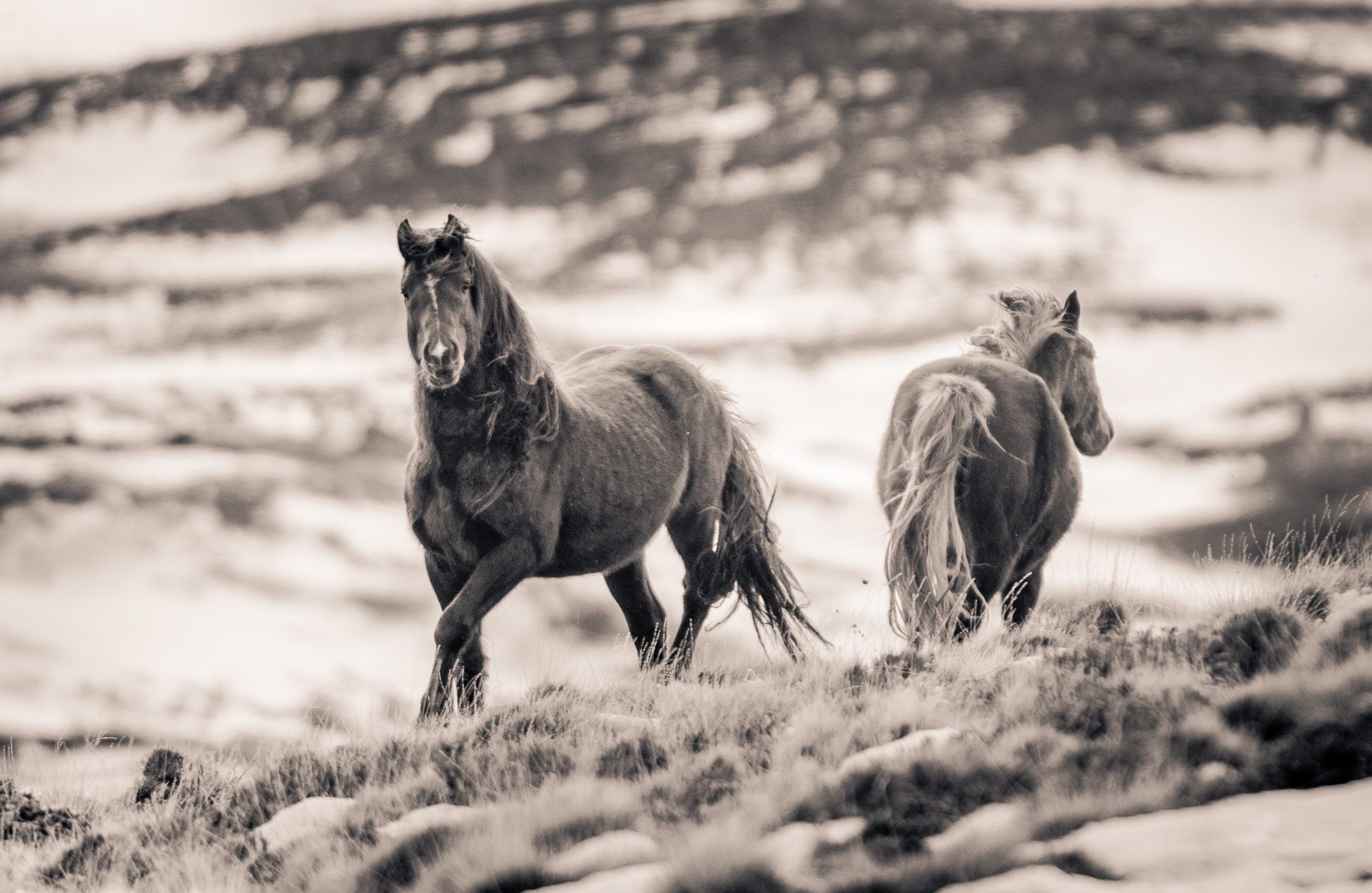
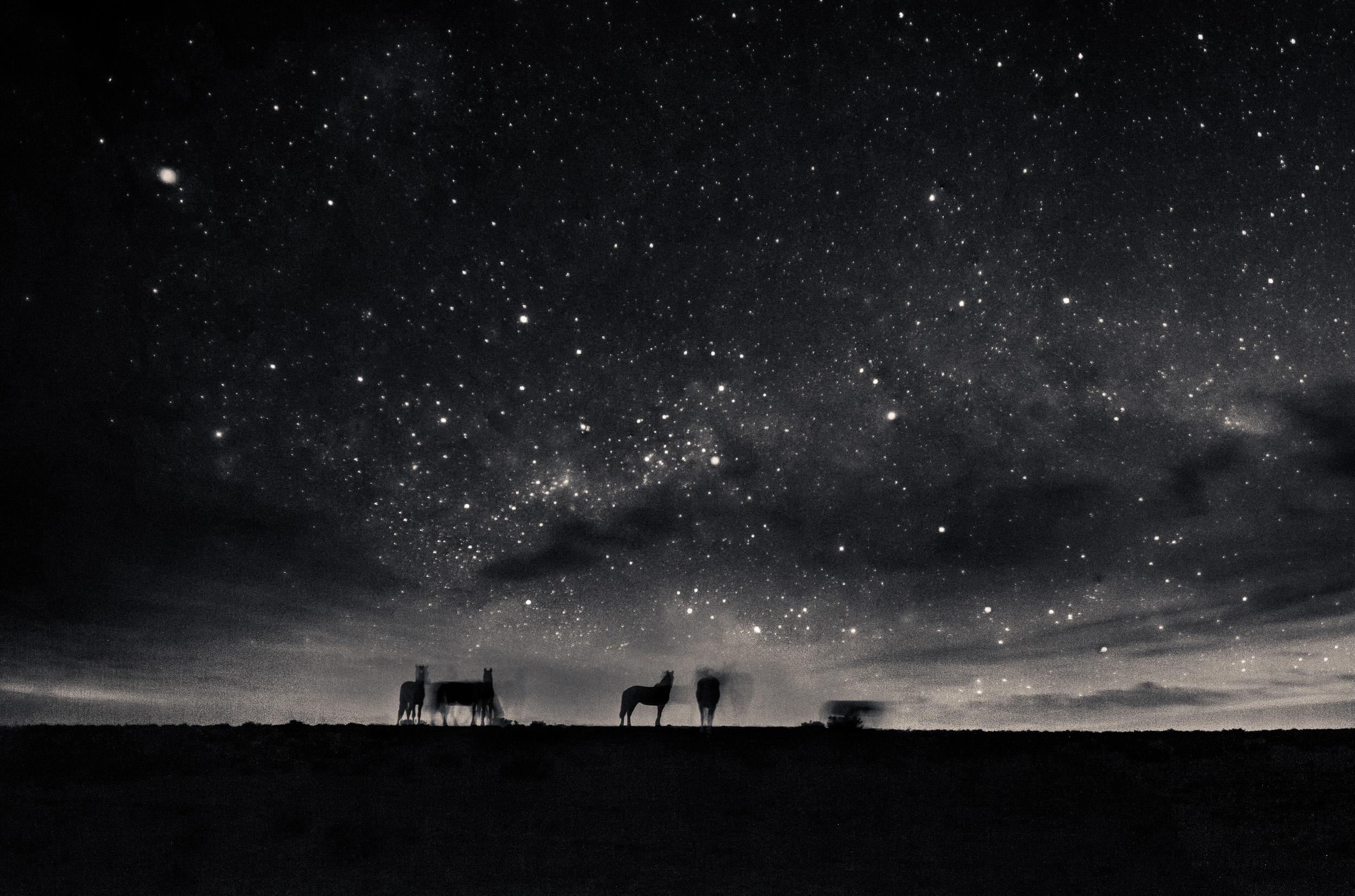
Since 1540, horses have adapted to the raw and arid lands of Patagonia, an extensive and empty region increasingly affected by human intervention. Now, there are few locations sufficiently ‘wild’ for these horses.
To find them, on horse or on foot, is a challenging task, but to see them — to observe the behaviour of a horse as a wild animal — is an incredible experience, completely different to visiting horses in a ranch or on a farm.
Characteristic of Patagonia is rough weather conditions: strong winds and very low temperatures. Despite this, the horses are able to survive with scarce food and water. One can see how the stallion protects the herd, and how the matriarch drives and guides the others.






